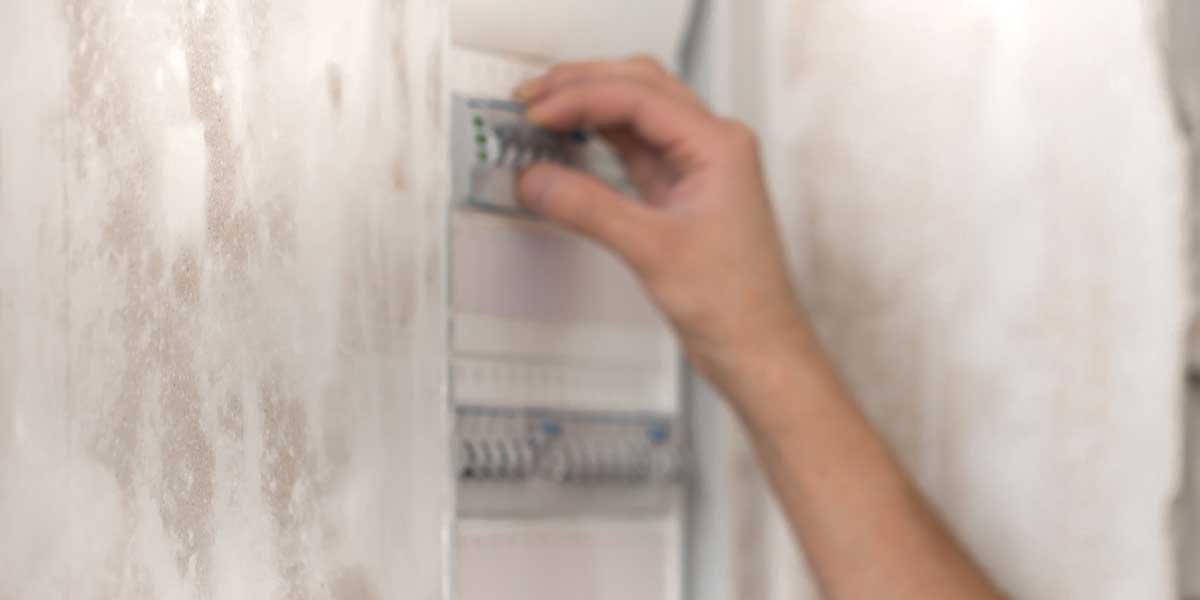At Expert Electric, we understand that knowing how to reset your home’s breaker is an essential and often overlooked skill for every homeowner. A tripped breaker or blown fuse is a safety feature designed to prevent damage or fire, but it can leave you in the dark. Our team of licensed electricians have crafted this step-by-step guide to help you confidently restore power while keeping safety front and center.
In this comprehensive guide, we’ll explain:
- What causes breaker trips or blown fuses
- How to safely reset your breaker or replace a fuse
- Troubleshooting steps after resetting
- When to call a professional
- Best practices for breaker maintenance
By the end, you’ll be well-equipped to handle emergency power interruptions and maintain a safer, more reliable home electrical system.
Section 1: Understanding Why Breakers Trip & Fuses Blow
1. Circuit Overload
Each circuit in your home is wired to handle a specific amperage (e.g., 15 A or 20 A). If too many appliances or lights are drawing power at once, the breaker trips to protect wiring from overheating.
2. Short Circuit
A short occurs when a hot wire contacts a neutral or ground wire, causing excessive current. Breakers trip instantly in this case.
3. Ground Fault
Similar to a short, but specifically occurs when hot touches ground. Ground-fault circuit interrupters (GFCIs) and breakers are designed to protect against this.
4. Arc Fault
Modern Arc Fault Circuit Interrupter (AFCI) breakers protect against dangerous arcing; they trip when they detect arcs that could ignite fires.
5. Aging Breakers or Fuses
Over time, breakers wear out or fuses degrade. Even a minor issue in the circuit can cause an aged breaker to trip repeatedly.
Section 2: Step-by-Step Instructions for “How to Reset Your Home’s Breaker”
2.1 Safety First: Preparation Before You Reset
- Turn off lights and unplug appliances in affected areas.
- Stand on a dry surface, with dry hands.
- Have a flashlight or headlamp handy.
- Know your panel location, usually in basements, garages, or utility rooms.
2.2 Identify the Tripped Breaker or Blown Fuse
- Circuit Breakers: Look for a breaker that is halfway between ON and OFF, or clearly in the OFF position.
- Fuse Panel: Check for discolored glass windows or melted metal filaments inside the fuse.
2.3 Resetting a Breaker
- Move the breaker to the OFF position firmly.
- Switch it to the ON position, you should feel a click.
- Restore power, then plug in and turn on appliances one at a time.
2.4 Replacing a Blown Fuse
- Turn the power OFF using a main fuse or breaker.
- Remove the bad fuse and inspect, look for melted metal or discoloration.
- Replace with identical fuse (same size, type, amperage).
- Restore power, then test your circuits.
Resetting your home’s breaker is straightforward but requires caution. Always turn off lights and unplug appliances in affected rooms. Then, locate your panel—typically in the basement, garage, or utility room—and carefully inspect the breakers or fuses.
If you’re unsure about the process, this step-by-step guide from Doc Electric outlines how to reset your breaker safely, with tips for when professional help is needed.
Section 3: Testing & Troubleshooting After Reset
3.1 Gradual Power-Up
Plug in one or two appliances at a time, and monitor outlet performance. If the breaker trips again, you might be drawing too much power.
3.2 Identify Overloaded Circuits
- Prioritize high-draw items (microwaves, hair dryers, space heaters).
- Distribute heavy load appliances across multiple circuits.
3.3 Inspect for Faulty Devices
Remove new or suspect appliances from the circuit; try operating on a different circuit. Repeated tripping may indicate a faulty device.
3.4 Monitor for Recurrence
A single trip is usually benign, but repeated trips indicate deeper issues (e.g., faulty wiring, ground/arc faults). That’s time to call Expert Electric.

Section 4: When to Call a Licensed Electrician
While knowing how to reset your home’s breaker empowers you, some situations always require professional intervention:
- Persistent or frequent breaker trips across multiple circuits
- Burn marks, melted wires, or unusual smells near your panel or outlets
- Outdated fuse boxes, especially knob-and-tube or clear glass fuse panels
- Breaker panel feels hot to the touch
- Children, pets, or anyone inexperienced living in your home
Repeated tripping, melted wires, or burning smells should never be ignored. These are warning signs of deeper electrical issues that demand expert evaluation.
The University of Washington’s EH&S electrical safety guide explains why some circuit breaker situations should only be handled by trained professionals and what steps to take to stay safe.
Our licensed electricians at Expert Electric have the training, tools, and expertise to diagnose and safely correct complex electrical problems.
Section 5: Safety Best Practices for Circuit Breaker Maintenance
- Label all breakers in your panel clearly—e.g., “Kitchen outlets,” “Bathroom GFCI,” etc.
- Monthly visual checks of the panel for signs of wear or heat
- Use only common‑use fuses or breakers, not oversized ones
- Upgrade to GFCI/AFCI protection as per current electrical code
- Avoid extension cords or adapters as permanent power solutions
- Schedule a full home electrical inspection every 5–10 years
Keeping your system well-maintained reduces the likelihood you’ll need to figure out how to reset your home’s breaker in an emergency.
FAQs
Q1. What does it mean if my breaker keeps tripping after resetting it?
A: It usually means your circuit is overloaded or there’s a short/ground fault. Unplug devices and reset again. If it trips again, stop using that circuit and call an electrician.
Q2. Can I reset my breaker without unplugging appliances?
A: You can, but it’s risky. Appliances may draw too much current the moment power is restored, always unplug first for safety.
Q3. What’s the difference between a fuse and a circuit breaker?
A: Fuses are single-use safety devices that melt out. Breakers are resettable switches. Both protect circuits from overloads, but breakers are more convenient.
Q4. Is it safe to reset a breaker during a storm?
A: If lightning is nearby or you suspect a power surge, wait until the storm has passed. Storm damage can cause surges, don’t risk it.
Q5. How often should I upgrade my breaker panel?
A: If your panel is over 20‑30 years old, shows rust or heat damage, or struggles to support modern electrical loads, upgrading is wise.
Final Thought
Understanding how to reset your home’s breaker is an essential skill that helps you keep your home safe, functional, and prepared for everyday electrical challenges. By following the guidance above, like turning off lights before resetting, identifying overloads, and regularly maintaining your panel, you empower yourself to manage minor interruptions promptly and safely.
Nevertheless, if you’re ever unsure, uncomfortable, or experience repeated breaker trips, there’s no substitute for professional help. That’s where Expert Electric comes in. Our licensed team ensures your home’s electrical system performs flawlessly, efficiently, and meets all current safety standards.
Contact Expert Electric
Ready to boost your home’s electrical safety and convenience? Reach out to Expert Electric today.
-
Call us: 604‑681‑8338
-
Email us: info@expertelectric.ca
We’re just one call or click away from your next electrical peace-of-mind upgrade.


